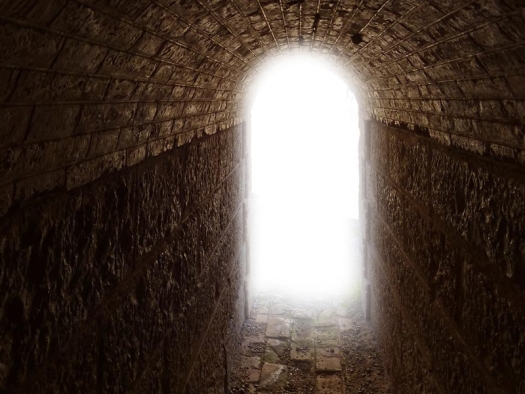NDE-LightEndTunnel.jpg

Photo by Marc Pascual / Pixabay License
There’s clearly something to this near-death experience (NDE) business well beyond the ravings of a dying brain.
That’s not just me saying it. It’s the recent conclusion of an international consortium of scientists from some of the world’s most prestigious universities.
After studying all scientific evidence to date, a multidisciplinary team of 19 academics – most working in the front line caring for people who ‘die’ and get resuscitated – has recently published a consensus statement concluding that the millions of people around the world who have had NDEs consistently recall such a similar set of experiences that they can’t be put down to hallucinations or illusions.
Publishing in the Annals of the New York Academy of Sciences ("Guidelines and standards for the study of death and recalled experiences of death––a multidisciplinary consensus statement and proposed future directions"), the team, which includes anesthesiologists, critical care doctors, emergency care specialists, neuroscientists and neurophysiologists, psychiatrists and psychologists from New York University, Harvard, University of California, King’s College, London and many other top universities, agrees that science shows a brain doesn’t die when the heart stops beating.
New discoveries reveal that our brain cells are far more resilient than scientists have previously believed and take many hours – possibly even days – to die after a person has been officially pronounced dead.
Speaking to Science Daily, team leader Sam Parnia, director of Critical Care and Resuscitation Research at New York University, long known for state-of-the-art care of patients suffering cardiac arrests, said:
'What has enabled the scientific study of death is that brain cells do not become irreversibly damaged within minutes of oxygen deprivation when the heart stops. Instead, they 'die' over hours of time. This is allowing scientists to objectively study the physiological and mental events that occur in relation to death.'
In fact, modern resuscitation techniques have enabled doctors to restore life to millions well after their hearts have stopped beating – but also enabled scientists to study their common experiences during the time they were supposedly dead.
What the scientific team now acknowledge in this landmark paper is that near-death survivors describe ‘a unique set of recollections in relation to death that appear universal’ and that follow a predictable ‘narrative arc’:
- A separation from the body and a heightened sense of consciousness
- A travel to a particular ‘destination’
- A detailed life review, which includes poring over all your actions, thoughts and even intentions toward other people
- A clear feeling of arriving place that feels like ‘home’
- A return back to the body and life.
The ‘life review’ was apparently evident in a single 2016 case study in which an EEG continuing to record brain waves on patient who was, to all purposes, dead showed evidence of the kind of activity associated with a brain sifting through memories ("Enhanced Interplay of Neuronal Coherence and Coupling in the Dying Human Brain").
Aside from these five stages, long familiar to students of near-death experiences, what’s most extraordinary is the scientific team’s acknowledgment that consciousness does not cease during these episodes. They agree that NDE patients come back, they are irrevocably changed and they display long-term psychological transformation.
There’s also evidence, they say, that the patients display gamma brain wave activity during the time they are supposedly dead. Gamma band, the fastest of brain-wave frequencies, is employed by the brain when it is working its hardest, particularly in the midst of great flashes of insight, heightened awareness and enhanced lucidity.
Studies of yogis have shown that, during deep meditation, their brains produce bursts of high-frequency beta or gamma waves, which often are associated with moments of ecstasy or intense concentration.
Dr Parnia, author of The Lazarus Effect, believes modern resuscitation techniques show that ‘death is not an absolute state’ but ‘a process that could potentially be reversed in some people even after it has started.’ He claims that patients suffering heart attacks can be revived up to 24 hours after their hearts stop beating with up-to-date equipment and the right procedures.
But he also goes further. Dr. Parnia says that evidence like this suggests that consciousness may be mediated by the brain but isn’t housed exclusively inside it.
These conclusions are similar to those long espoused by many frontier scientists like the Russian physicist Dr. Konstantin Korotkov, who developed the Gas Discharge Visualization (GDV) device, with state-of-the-art optics, digitized television matrices and a powerful computer, to study light emitting from the human body.
In the late 1990s, Korotkov and a team of assistants took readings of dozens of men and women who had recently died, and found that for many hours there was no principal difference between the gas discharge glow of live people and the cadavers.
Furthermore, the pattern of the light over time followed distinctly different patterns, which seemed to mirror the nature of their deaths; when people died gently, so did their light, but when they died more violently, their light had more abrupt transitions.
Those who died a natural death had larger oscillations during the first 55 hours after death, which afterwards receded to gentler waves.
Although materialists would argue that the light was simply the residual physiological activity of muscular tissues in the process of decomposition, the forensic medical literature made it clear that Korotkov’s data did not resemble in any way the electrophysiological characteristics of a newly dead body.
The only conclusion was that this light carried on after life had ended, evidence of some sort of transition.
As the first ever peer-reviewed, large-scale consensus statement and position paper about the scientific study of NDEs, the Parnia et al paper is an extraordinary breakthrough in the realm of consciousness research.
But there is something even more astonishing about the fact that all these mainstream scientists working in top academic settings have reached this radical conclusion.
And that’s how much they’ve been universally ignored by the general press. The few mentions of it that I could find on Google were in Medical News Today and The Jerusalem Post.
Sadly, your average science reporter today is a strict materialist, who prefers to cling tightly to the outdated paradigm, despite all evidence to the contrary, that consciousness is entirely housed inside the brain and dies at the same time the physical body does.
I guess they’re all in for a bit of a shock at the point when their hearts and brains give up, but their minds keep going – on and on and on.
NDEs: Not Just Delirium was originally published on Lynne McTaggart's Blog, April 29, 2022. Used with permission.


